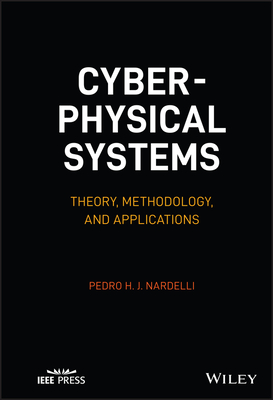EMERGENT INFORMATION: A UNIFIED THEORY OF INFORMATION FRAMEWORK
暫譯: 新興資訊:統一資訊框架理論
Wolfgang Hofkirchner
- 出版商: World Scientific Pub
- 出版日期: 2013-02-01
- 售價: $4,310
- 貴賓價: 9.5 折 $4,095
- 語言: 英文
- 頁數: 292
- 裝訂: Hardcover
- ISBN: 9814313483
- ISBN-13: 9789814313483
-
相關分類:
其他
海外代購書籍(需單獨結帳)
商品描述
Many academics refrain from undergoing unifications, as most undertakings are reductionistic. This book contends that it is the noble task of an as-yet-to-be-developed science of information to go one step in the direction of a unified theory of information without falling back into neither reduction nor anthropomorphisation.
To be able to succeed in an ambitious task like this, the book advocates the application of complex systems theory and its philosophical underpinnings. Information needs to be interpreted in terms of self-organisation to do justice to the richness of its manifestations. The way the book does so will provide the reader with a deep insight into a basic feature of our world.
The following are discussed in the volume: A Science of Information; A New Way of Thinking; Praxio-Onto-Epistemology; Evolutionary Systems Design; Evolutionary Systems Ontology; Evolutionary Systems Methodology; Capurro's Information Concept Trilemma; A Multi-Stage Model of Evolutionary Types of Information: Pattern Formation, Code-Making, and Constituting Sense; A Triple-C Model of Systemic Functions of Information: Cognising, Communicating, and Co-Operating; Nine Categories of Information Capabilities: Reflectivity (physical), Psyche (biotic), Consciousness (human); Connectivity (physical), Signalability (biotic), Languageability (human); Cohesiveness (physical), Coherency (biotic), Communitarity (human); Nine Categories of Information: Response (physical), Flexible Response (biotic), Reflexion (human); Correspondences (physical), Signals (biotic), Symbolic Acts (human); Assemblage (physical), Assignment (biotic), Association (human); A Unified Theory of Information for, about, and by means of the Information Society.
Readership: Advanced undergraduates and graduates in computer science, bioinformatics, systems biology, cognitive science, communication studies, information science. Experts in the same fields as well as non-experts interested in the information concept.
商品描述(中文翻譯)
在資訊時代的曙光中,正確理解資訊及其與物質和能量的關係對於文明的生存至關重要。然而,將科學和技術中所依賴的資訊概念與社會科學、人文學科和藝術中流行的概念進行調和的嘗試相對較少。本書提供了一種新的方法,擺脫了片段化的資訊概念。
許多學者避免進行統一,因為大多數努力都是還原主義的。本書主張,尚待發展的資訊科學的崇高任務是朝著統一的資訊理論邁進,而不會退回到還原或擬人化的陷阱中。
為了能夠在這樣一個雄心勃勃的任務中取得成功,本書提倡應用複雜系統理論及其哲學基礎。資訊需要從自我組織的角度進行解釋,以公正地反映其表現的豐富性。本書的方式將為讀者提供對我們世界基本特徵的深刻洞察。
本書討論的主題包括:資訊科學;新的思維方式;實踐本體認識論;進化系統設計;進化系統本體論;進化系統方法論;Capurro的資訊概念三難;進化類型資訊的多階段模型:模式形成、編碼和構成意義;資訊的系統功能三重模型:認知、交流和合作;九類資訊能力:反思性(物理)、心靈(生物)、意識(人類);連接性(物理)、信號性(生物)、語言能力(人類);凝聚性(物理)、一致性(生物)、社群性(人類);九類資訊:反應(物理)、靈活反應(生物)、反思(人類);對應(物理)、信號(生物)、象徵行為(人類);集合(物理)、指派(生物)、聯結(人類);針對資訊社會的統一資訊理論。
讀者對象:計算機科學、生物資訊學、系統生物學、認知科學、傳播學、資訊科學的高年級本科生和研究生。相關領域的專家以及對資訊概念感興趣的非專家。






























